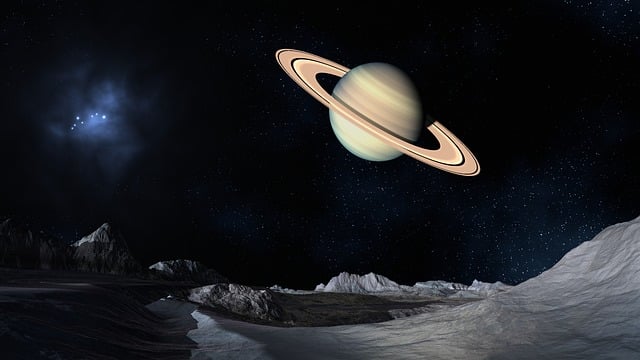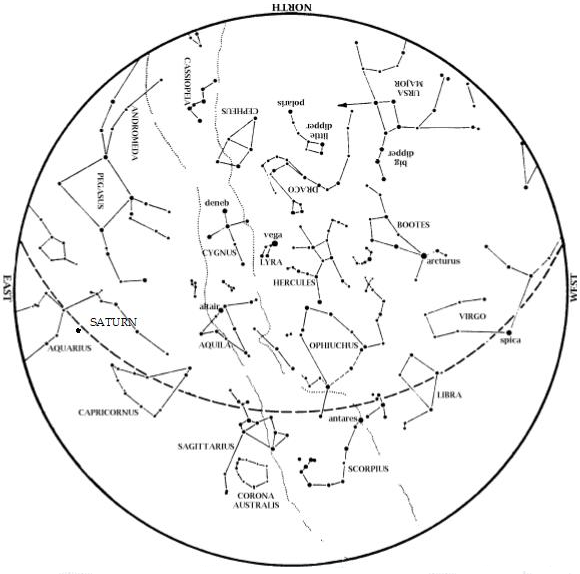Editor’s Note: We are looking up as HMNS Astronomer James Wooten explains the sky happenings for the month of August, including the approaching Perseid meteor shower.
Mars is low in the west at dusk, and hard to notice because it is only as bright as an average star.
Mercury appear below and to the right of Mars in early August.
Saturn rises by 9:40 pm on August 1. It rises during twilight by mid-month and is at opposition (up all night long) on August 27. Face east southeast to watch it rise.
Jupiter is in the morning sky this month. Look very high in the south southeast as day breaks.
Venus is lost in the Sun’s glare and out of sight most of this month. Inferior conjunction, when Venus is roughly between Earth and the Sun, occurs August 12. You can look for Venus low in the east at dawn the last week of August.

The Big Dipper is above and to the left of the North Star, with its handle pointing up. From that handle, you can ‘arc to Arcturus’. Arcturus is the brightest star we see on August evenings.
The Summer Triangle is high in the east at dusk. This consists of Deneb, Vega, and Altair, the brightest stars in Cygnus, Lyra, and Aquila respectively. Scorpius, the Scorpion, is in the south, with the ‘teapot’ of Sagittarius to his left. When you face between these two constellations, you face the direction of the galactic center, which all stars in the Milky Way orbit. The Great Square of Pegasus rises in the east, heralding the coming autumn.
If you are far enough from bright city lights, you might look for the Milky Way band. This band is brightest near the galactic center and extends from there right through the Summer Triangle. In fact, every star we ever see in the sky with the naked eye is in our Milky Way. Indeed, our galaxy is so big that only stars relatively close to us appear as distinct stars; the rest of our galaxy blurs out and appears as the Milky Way band across our sky. For example, Deneb is about 1600 light years away, which is quite far. The entire Milky Way, however, is 100,000 light years across, making Deneb one of our relative ‘neighbors’. Thus, we see our Milky Way as a blur in the background with stars like Deneb (and Vega, Altair, Arcturus, etc.) in the foreground.

The Summer Triangle is high overhead. This consists of the brightest stars in Cygnus, Lyra, and Aquila. Scorpius, the Scorpion, is in the south, with the ‘teapot’ of Sagittarius to his left. From the Big Dipper’s handle, ‘arc to Arcturus’ and ‘speed on to Spica’ in the southwest. Saturn is in the southeast at dusk and up all night long by the end of this month. The Great Square of Pegasus rises in the east, heralding the coming autumn.
Moon Phases in August 2023
Full Aug. 1, 1:31 p.m.; Aug. 30, 8:35 p.m.
Last Quarter Aug. 8, 5:28 a.m.
New Aug. 16, 4:38 a.m.
1st Quarter Aug. 24, 4:57 a.m.
The Perseid meteor shower peaks every year in mid-August as Earth passes through debris left by Comet Swift-Tuttle. This year, the peak (August 11-13) coincides with a waning crescent Moon. Look for, on average, one meteor per minute, with more meteors visible as dawn approaches.
Our George Observatory is now open every Saturday night for observing! Purchase tickets in advance on our website.
Clear Skies!
Need more space? Take a look at July’s sky happenings here.






